Two of the most influential countries are Germany and Switzerland, but it’s not just the countries that excel, their signature dogs do too, so what happens when you create a German Shepherd Bernese Mountain Dog Mix?
A German Shepherd Bernese Mountain Dog Mix, also known as the Bernese Shepherd, or, the lesser known and a lot harder to pronounce, Euro Mountain Sheparnese, is a combination of one of the most disciplined large breed dogs and the gentlest one.
Both of them are also incredibly durable and hard working dogs thanks to their upbringing, so it only makes sense to try and mix them to see if you get a better result.
And said result didn’t disappoint in any way as this designer dog breed brings the best of both worlds together with discipline, loyalty, affection and spirit all maxed out, and they’re even great around kids and other dogs.
They do need a lot of physical exercise and mental stimulation to stay interested and in shape though, but it’s a small price to pay for such an incredible mixed breed doggo.
But there’s more to it than just simple adjectives on top of wondering if it’s worth it in the end.
It certainly isn’t all plusses, there are a few minuses here and there, and, once we go through everything, we can figure out whether or not this is the right dog for you.
Before we get into that, we’ll need to take a brief look into his parent breeds to see which traits are similar to theirs and which ones have developed all on their own.
So, read on to find out more about this beautiful hybrid dog breed.
The German Shepherd Bernese Mountain Dog Mix: What Is It?
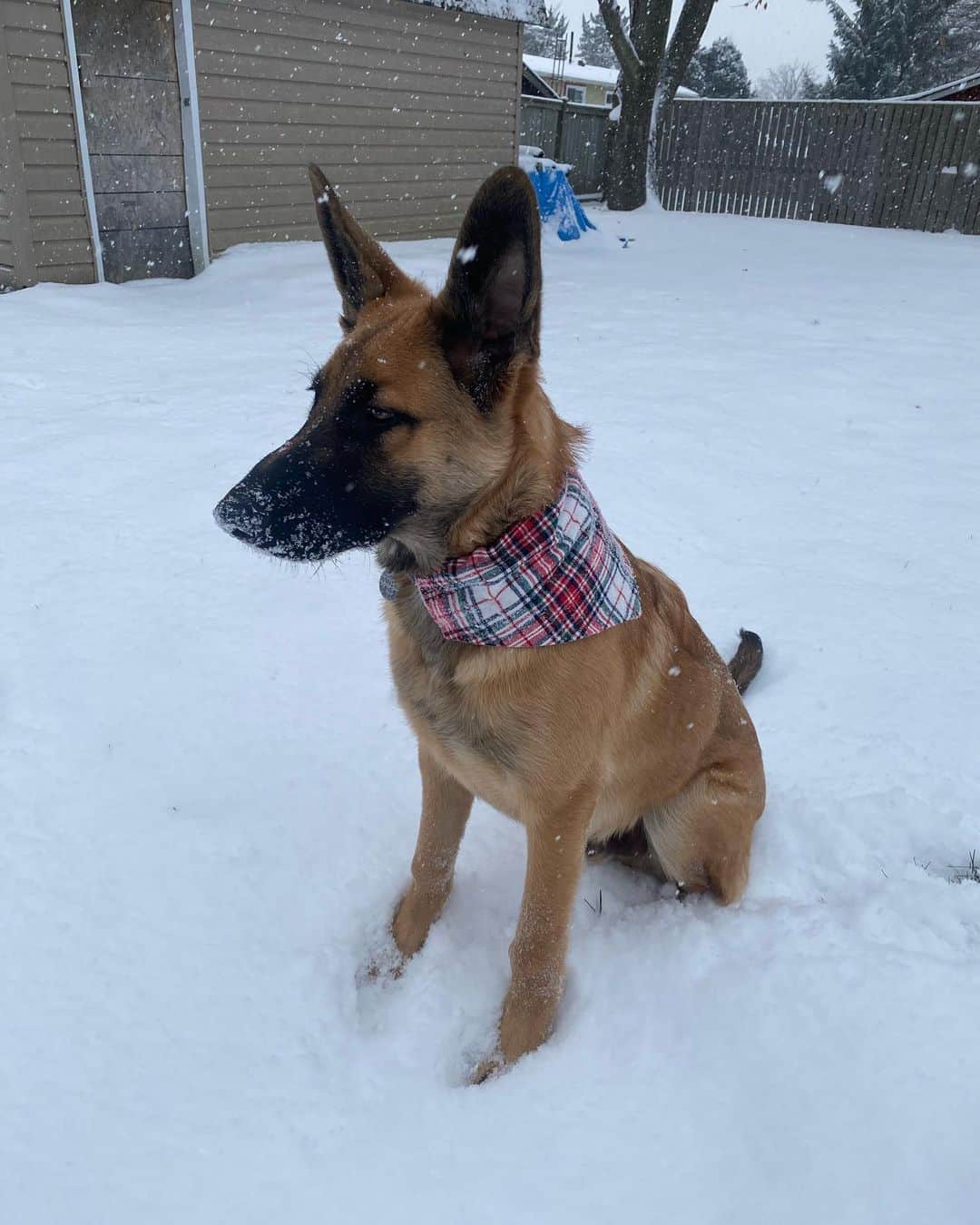
The Bernese Mountain Dog German Shepherd mix is a crossbreed whose intent was to try and shore up the detriments of the two parent breeds, the German Shepherd and the Bernese Mountain Dog.
While the German Shepherd is often seen as the ideal guard dog, it doesn’t often do too well with other dogs or around small children, not to mention the training requirements needed.
The Bernese mountain dog, on the other hand, is considered to be one of the friendliest large dog breeds out there to kids, dogs and other humans alike as well as possessing incredible intelligence.
However, they do unfortunately suffer from an incredibly short lifespan and a plethora of health problems.
Fusing the two parent breeds is meant to somewhat remedy these detriments, fusing the GSD’s hardiness to extend the lifespan of the Bernese mountain dog.
Meanwhile, the general amiability of the latter is used to make the former more child and dog friendly and tame the high prey drive of the GSD.
Naturally, not every aspect can be covered so the newly made breed still requires a lot of obedience training to be kept in line, but once it’s finished, you’ll rarely have an issue with insubordination.
Some hereditary diseases and health problems transfer too, but you’ll still end up getting an extremely beautiful dog that no dog owner would regret having as his furry friend.
The Parent Breeds
Before we go into further detail regarding the Bernese Shepherd, it’s important to discuss the two breeds that were the catalyst to creating it in the first place.
After all, despite their many positives, some people felt it necessary to try and iron out the negatives too, and getting a better understanding of them will help you get a better grasp on some of the inherited traits of the mixed breed.
The German Shepherd
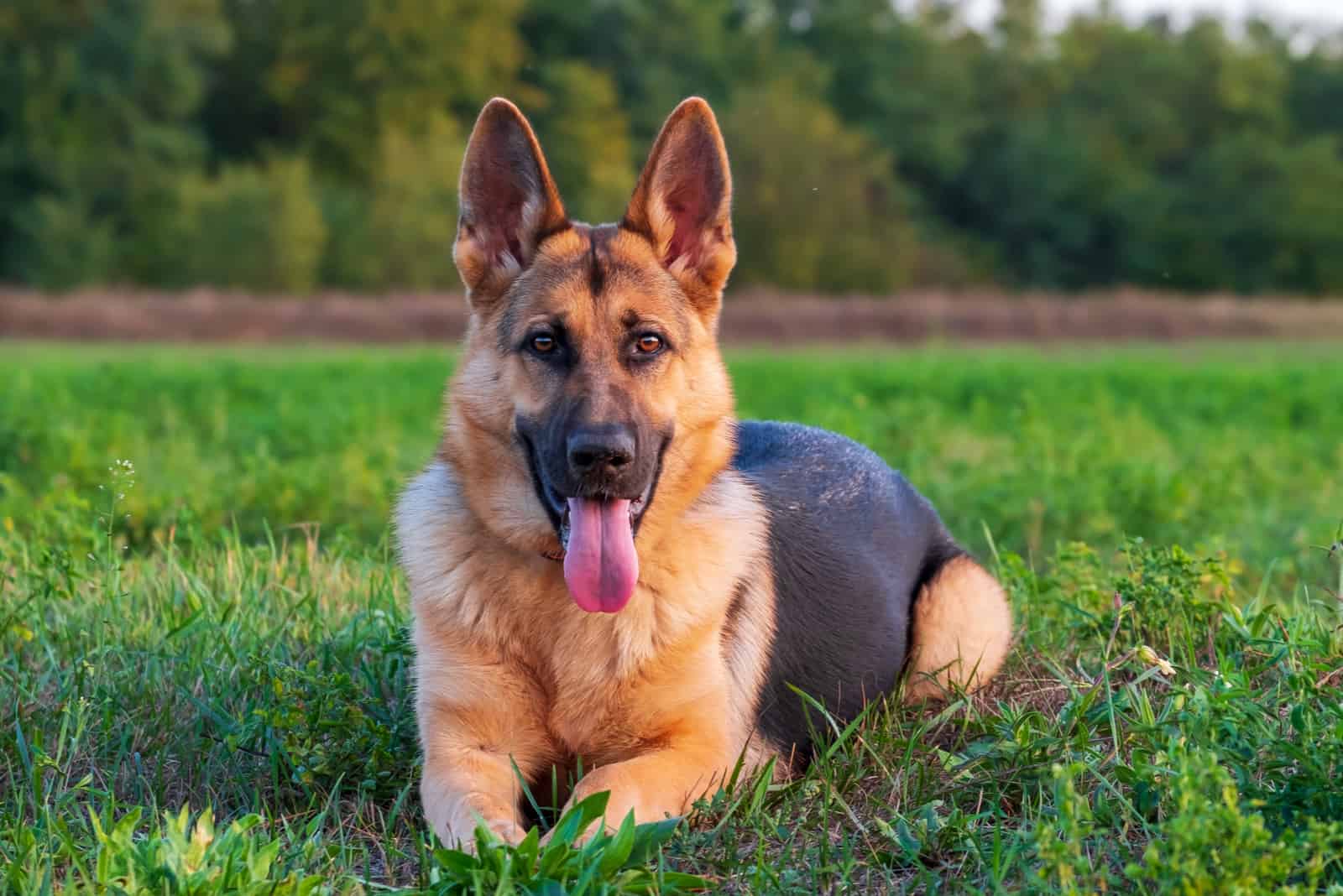
First up is the German Shepherd, the first breed that comes to mind when thinking of discipline and defense, the ideal watchdog.
Breed History
The German Shepherd, despite being one of the flagstone representatives of dog kind, is surprisingly not that old a breed, only coming in at the tail end of the 1800s.
Before the year 1891, there weren’t any particularly standardized dog breeds in Germany, at least as far as their shepherd dogs were concerned, instead there were plenty of breeds that performed similar duties, but had vast physical differences.
The so-called Phylax Society remedied that as it aimed to have the breeds conform to some sort of standard, or at least it tried to, but failed, though it was an inspiration for people to continue their work further down the line.
One man in particular, Max von Stephanitz, around the year 1899, saw the product of one of the first generations of German Shepherd, one raised through a lot of selective breeding and made to be the ideal working dog, at least in the eyes of Stephanitz.
He’d buy the dog and found the Society for German Shepherd Dogs of which his pooch, Horand von Grafrath, would be dubbed the first registered GSD of.
News spread fast and the society gained in popularity at a breakneck pace, gaining more and more members not just in Germany, but internationally, all of which wanted to be part of this legacy.
The first GSD fathered an astonishing number of children who would only continue on that route, primarily dealing with inbreeding in order to maintain the traits Stephanitz coveted so dearly.
The first modern GSD, one with the traits we know today, is believed to be Horand’s son, Beowulf.
Given the dog’s impeccable reputation, it was soon adopted to be more than just a working dog, but an army and guard dog as well, Nazi Germany in particular as it had the traits that their doctrine respected and they deemed it a good representative of it.
While a dark blemish on the breed’s otherwise stellar past, it’s one worth noting as the breed wasn’t at fault here.
They had other darker representations, namely being a favored breed of gangsters and other crooks of slightly higher caliber, but, in the later years, they also became a favorite for the police force, the well known K-9 units.
As for when they were introduced to our shores, that came around the year 1906, a little bit after they got popular in Germany and would get certified by the AKC (American Kennel Club) 2 years later, in the year 1908.
Appearance
Most people have seen or already know what a German Shepherd looks like, but it’s still worth pointing some characteristics out.
They’re considered to be an intermediary between medium and large dog breeds, coming in at around 25 inches for male representatives and around 23 inches for the female GSDs height wise.
As far as weight goes, that one has a more drastic difference, with the males being bulkier, sporting an impressive 75-80 pounds on average as adults while females are leaner, only carrying around 57-62 pounds on average.
Though, even with that, there’s still a lot of wiggle room as to what’s considered a healthy weight.
Their head forms a rather imposing figure with their longer muzzle which appears like it was chiseled from a rock with its square features, a darker nose, large, sharp teeth and a very powerful jaw.
Aside from that their forehead is somewhat domed, making them appear as if they’re glaring at their target or as if they’re focused.
Then you have their ears which stand upright, as if on alert, and are rather large in comparison to their head overall.
Its head movements often resemble that of their lupine ancestors with their long necks and positional adjustment depending on the type of movement, be it lowered to stalk prey or running, or raised when he notices something or someone of interest.
Moving over to the body, the GSD is covered in a nice and dense double coat paired together with a thick undercoat, keeping him nice and warm during the cold winter months.
While medium fur length German Shepherds are the standard, you can also find long haired ones, albeit they’re a lot less common than the former.
Said fur comes most commonly in the familiar mix of tan and black, but there are various other options out there paired together with their various black body markings, but more on that a little later.
Finally, they have a relatively long and bushy tail that completes the beautiful ensemble of the ‘ideal working dog’, as Stephanitz would put it.
RELATED: Long Haired German Shepherd Vs Short Haired: Which Is Better?
Temperament
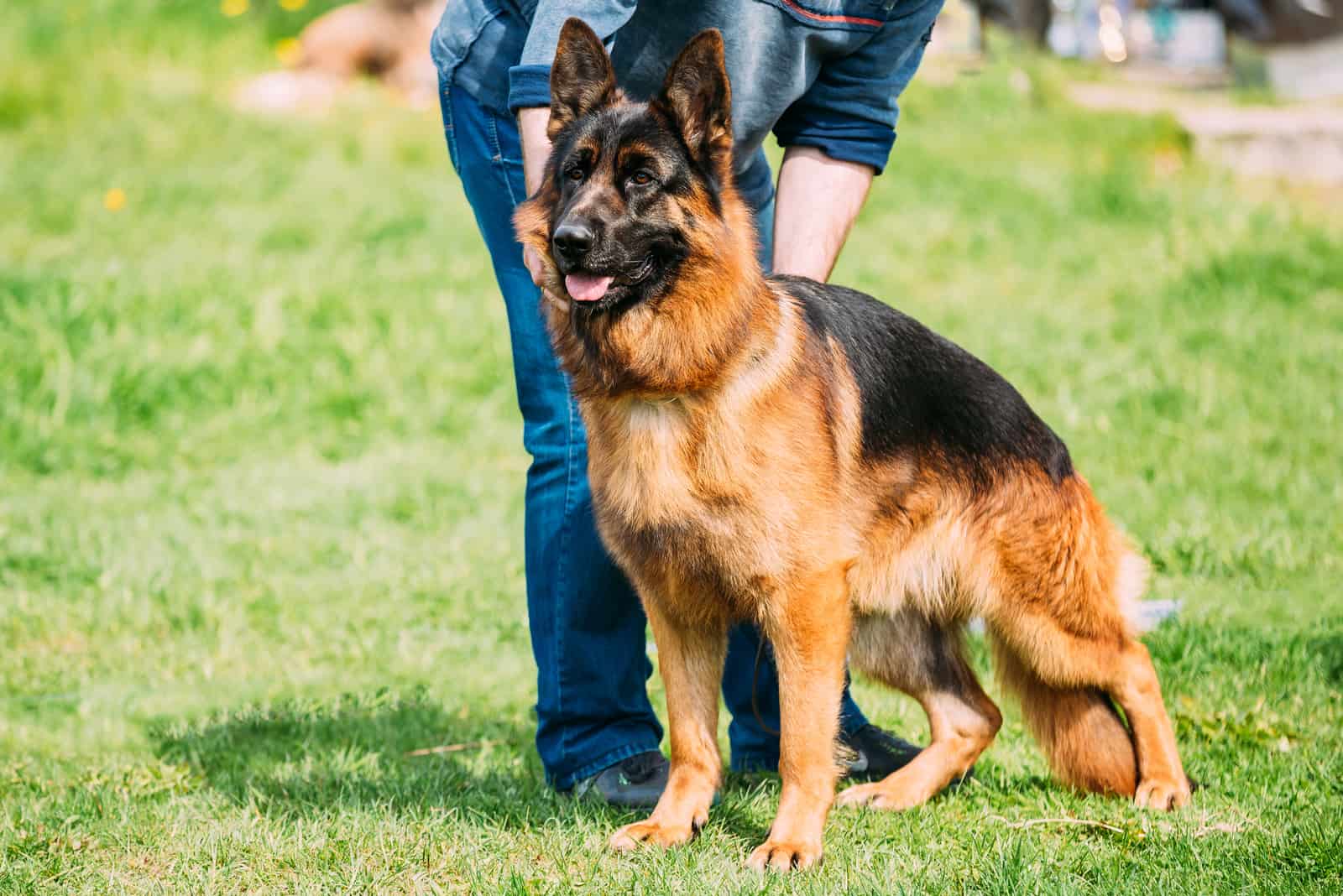
As mentioned before, a German Shepherd is the ideal type of dog in case you need one to guard property, watch out for intruders or be used as a general working dog due to their exceptional desire to do things and motivation to learn new things.
They make for exceptional search dogs too once trained properly due to that same high level of curiosity toward discovery.
That said, they certainly do have temper problems and aren’t recommended for people who can’t reign that in.
They’re only really loyal to their family, but they tend to get a bit overprotective, wary of any strangers that may arrive at your doorstep.
On top of that, their high prey drive and ingrained shepherding nature will have them nipping away at your kids to try to get them to fall in line or similar which isn’t pleasant for them.
In terms of attacks on humans, they’re up there with Pit Bulls, albeit not nearly as common, but they are dangerous, mostly because people haven’t successfully trained them.
That’s why early socialization as part of their dog training is a must or else you’re going to end up with a problem on your hands.
Though, if you manage to complete their training properly they’ll be one of the most loyal and disciplined pets you could ever own.
Coat Colors
While the most common one that we end up seeing is black and tan, there are multiple other coat color options for the German Shepherd, albeit rare to see.
The standard colors are as follows:
- Black and Tan
- Black and Red
- Black and Silver
- Black and Cream
- Black
- Bi-color
- Sable
Of course, there are some non standard ones too, albeit not AKC certified, though with mixed breeds, it doesn’t really matter all that much.
Here are most of them:
- Gray
- Isabella
- Blue
- Blue and Tan
- Liver
- Liver and Tan
- White
Though, most, if not all of these colors can also come out lighter, seemingly washed out as well while still qualifying as a unique color.
Lifespan
The average lifespan of the German Shepherd is, by all counts, average when keeping large dog breeds into consideration, coming out at 9-13 years.
Despite seeming like too little, it’s the average for large breeds given how many health problems develop for them the older they get, particularly regarding the spine due to their center of gravity.
Through proper dieting and health check-ups, they can make that 13th year, but the average tends to be at around 10-11 years.
The Bernese Mountain Dog
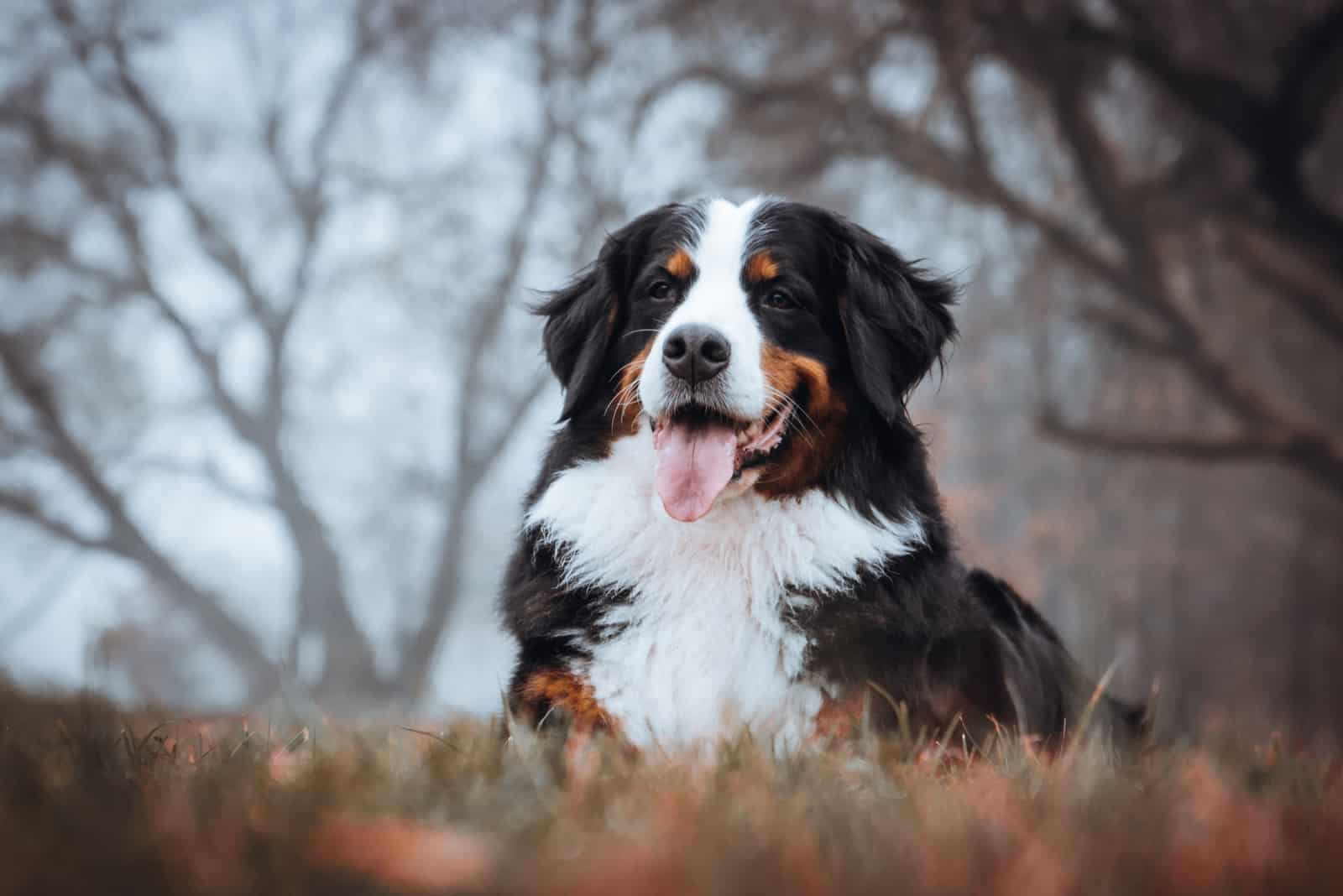
The second parent is the Bernese Mountain dog, the famous Swiss mountain dog and the other part of this equation.
He’s also one of the most ideal family dogs to have if you’re looking for a large doggo.
Breed History
The initial name of this dog was the Durrbachhund, or the hound of Durrbach, a small German town.
However, it’s also believed that the breed originated from Roman mastiffs.
The modern version of the Bernese Mountain dog comes from Berne and was used as farm dogs to help guard farms from intruders.
They were also given the name “cheese dogs” as they were also used as guard dogs for transporting dairy products like cheese and milk.
The standard for the breed was solidified in the year 1907 when the Schweizerische Durrbach-Klub was founded.
As for when they came over to the US, that happened nearly a decade after the first World War ended, around the year 1926 and they were recognized over 10 years later, in the year 1937 by the American Kennel Club as an official breed.
Though, an official club for the Bernese Mountain dog in the United States only showed up around 1968.
Despite such a late founding, the breed is now among the top 40 most popular breeds in the states.
Appearance
If there’s anything that one can notice about the Bernese Mountain dog, it’s their unique appearance, a natural tri-color coat of white, black and tan or rust colors with black being the dominant one.
The white can be found around the chest, face and the paws while the rust colors are found around the mouth, legs and part of the eyebrows.
The coat itself is a double coat, with the undercoat being thick and wooly while the outer coat is a bit longer for texture and added protection.
As for their build they’re pretty muscular dogs, capable of going large distances without tiring, built to be good working dogs on top of everything else.
Their head isn’t as imposing as that of the German Shepherd, relatively flat on top and with a standard muzzle length.
The ears are of medium size and are floppy, high set and triangular in shape without pointed ends making them appear more amiable.
Their legs are pretty sturdy with a good amount of musculature with relatively tame paws.
Finally, the height of the male Bernese Mountain dog comes out to around 26 inches while female representatives end up around 24-25 inches, give or take an inch here and there.
As for the weight, the males average around 90-110 pounds while the females are lighter, with around 80-90 pounds on average, making them look a lot leaner while the males appear bulkier.
SEE ALSO: Bernese Mountain Dog Growth Chart For Pups And Adults
Temperament
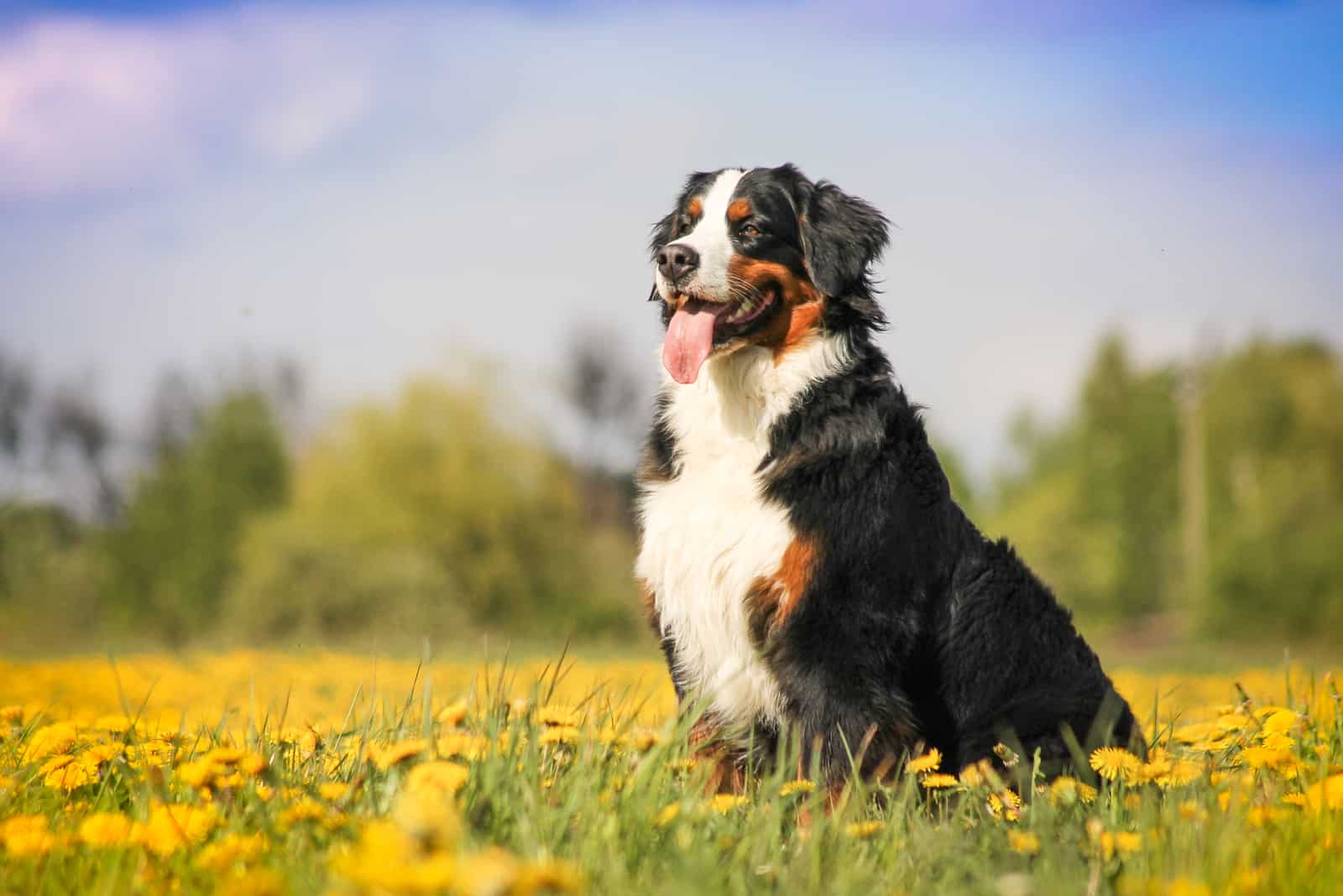
As far as temperament goes, the Bernese mountain dogs are very open and friendly to everyone they meet, welcoming to other dogs and small children alike.
They’re confident in their behavior and are often really playful, they won’t act aggressively toward anyone unless goaded into doing so, and even then it’ll take a lot to get this lovely bundle of fur to do anything of the sort.
They’ll hardly need any early socialization to teach them proper behavior, if any, though the amount needed is mostly on a case by case basis.
What they will need, however, is attention as they love being around people.
And, if they’re deprived of that desire’s fulfillment by either not going out much or you not being around enough to satisfy it, they will end up turning to destructive behavior to grab your attention.
This is because being overly friendly is a double edged sword where the bad end of it is severe separation anxiety, the bane of any extremely friendly doggo.
They love walks and just being outside in general, enjoying the feel of nature and exploring new places.
While they like to laze around too, when they get into the spirit of exploration or it’s playtime, you won’t find a heartier and speedier dog out there.
They are known to bark a lot if untrained though, so do keep that in mind and they do need to be taught to temper their excitement as a dog that big jumping in to greet someone can end up in someone getting hurt without that being the intent.
All of these good traits, however, are what make them a great foil to the GSD’s more stern and protective nature and why the two were chosen to create this specific designer dog in the first place.
Coat Colors
Unlike most other dogs, Bernese Mountain dogs only really come in the tri-color variant as the standard one, though they do have some non standard options too should some genetic anomaly occur to make one color more dominant than the others.
These are as follows:
- Jet Black
- Clear White
- Rich Rust
Don’t worry though, these colors aren’t any indicator of a particular underlying health issue like they can be with a few other dog breeds e.g. the French Bulldog.
SEE ALSO: The 3 Bernese Mountain Dog Colors & Markings
Lifespan
The one big downside to these good boys is their tragically short life expectancy. Due to the great number of health issues that plague this wonderful and unique doggo, they often only live only for 6 to 8 years of age, 9 if he’s of impeccable health.
The German Shepherd Bernese Mountain Dog Mix
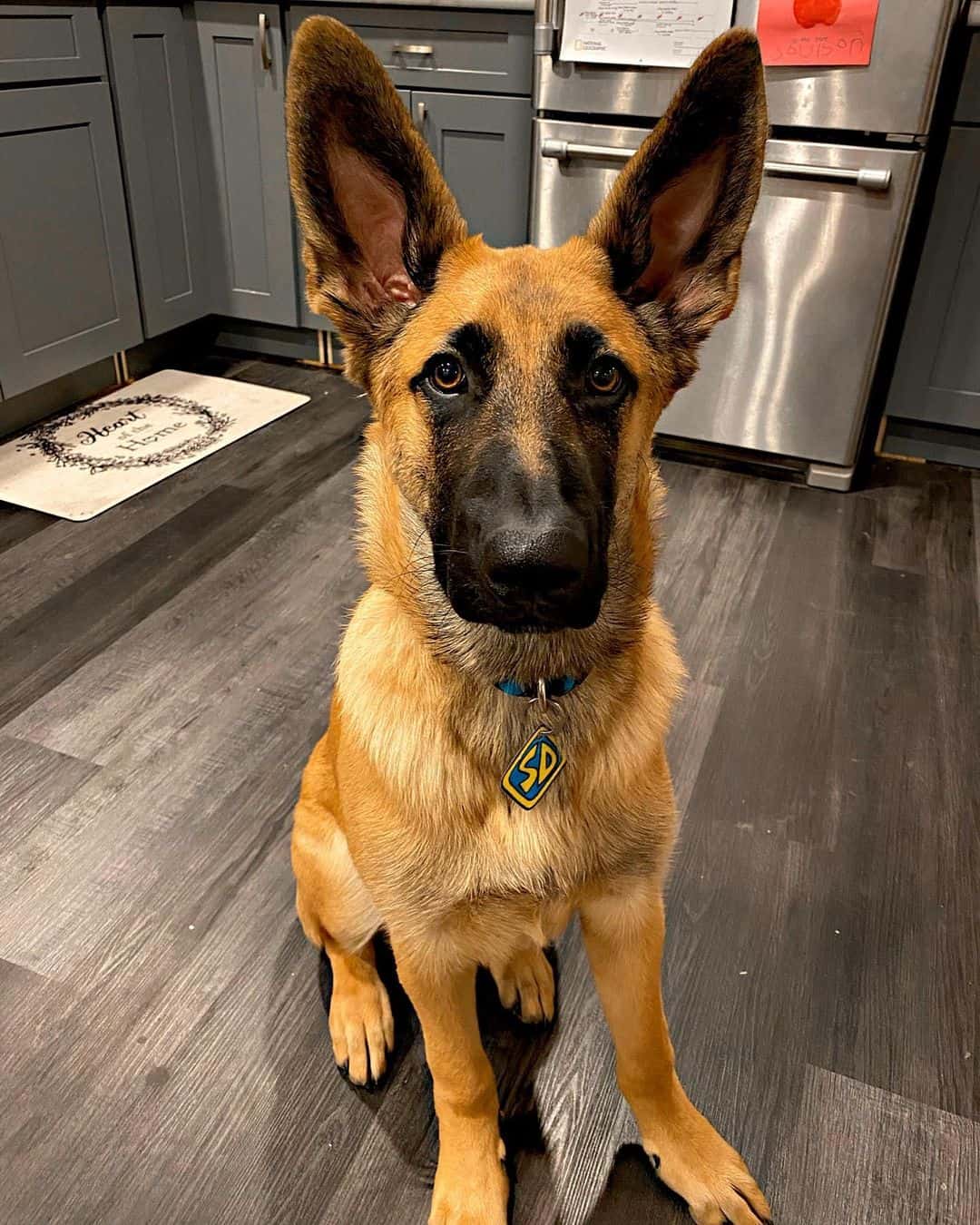
With the two parent breeds explained, it’s time to delve into the background of the Bernese Shepherd and to find out the fine threads that make up this incredible mixed breed doggo.
Breed History
There isn’t much on record about when the first Bernese Mountain dog German Shepherd mix puppy came about, but one can always assume the 90s of the previous century would be a decent guess as that’s when the designer dog craze came about.
Everyone rushed together to find the next best dog breed and to innovate on existing breeds, to make them better by weeding out their apparent shortcomings.
Some were less successful than others, but whoever came up with the Euro mountain Sheparnese puppy definitely struck gold.
Appearance
To no surprise, a mix between two big dogs is going to be an equally big dog with sizes averaging at around 25 to 26 inches in terms of height with about an inch shorter for female members of the breed.
As far as weight is concerned, that one comes in at around 90 to 95 pounds with the maximum of healthy adult weight coming in at 110 pounds of weight.
The females, on the other hand, come up to around 80, maybe 85 pounds on average.
The actual weight really depends on the dominant gene.
Those who have the GSD be the dominant one will be lighter than ones with the Bernese Mountain dog’s traits.
As for the actual looks, that too is a tossup based on gene dominance, though a few things are certain, and that’s his fluffy coat remaining intact but his head being an in-between from the two parent breeds.
His ears will likely droop normally, but can stand at attention if he’s on high alert and they aren’t rounded like the Bernese mountain dog’s are, but are more triangular like the GSD’s would be.
If you need a slightly better comparison, then know that their build tends to be similar to that of either a Labrador Retriever or a Rottweiler, albeit with vastly different colors, but a similar color pattern.
Speaking of build, both his parents are relatively muscular and bulky which translates to him too, giving him great stamina and a lot of strength behind his walk.
Some may be more lean than others, but the thick fur will still make them appear rounder than they normally would be.
The coat in question is a double coat, much like both parents with a relatively thick undercoat and a long haired outer coat, giving him excellent protection from the elements.
Temperament
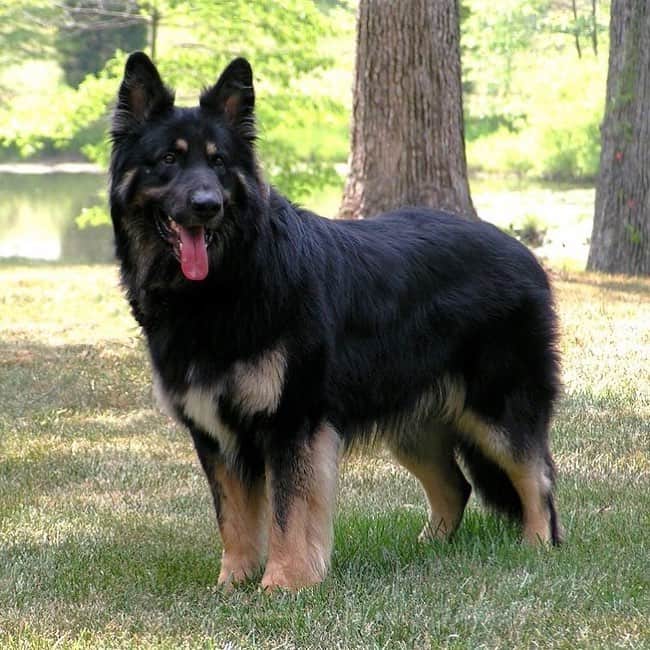
With the main goal being to fix the downsides of both parent breed temperaments, it should come as no surprise that the behavior of the Bernese Shepherd is a fusion of theirs.
He still contains the alertness and protective nature of the German Shepherd, but it’s tempered to a point where he won’t glare at every stranger that may want to try and approach his newfound family.
In the same vein, he’s friendlier to other dogs, small kids and other people that may come up and talk to you, but he won’t be jumping at the bit to try and get to know them first and will be a bit more disciplined in that regard.
This friendliness can be a problem if his desire to bond with others isn’t met, risking separation anxiety forming and the development of destructive behavior around your home.
So, make sure you leave some time in your busy schedule to hang out with your furry best bud.
Given his exceptional stamina, he’ll have plenty of energy to either be put to work if you got him to be a working dog, either herding livestock or just helping escort goods, or simply to run around and have fun.
Be sure to satisfy said need with plenty of walks, exercise or a simple game of fetch every now and then to help get that energy out of his system.
Around 60 minutes a day should be enough considering his high energy levels.
It may seem like a demanding exercise requirement, but that’s pretty normal for active dogs, besides, it’ll help keep him entertained, and will help keep him from putting on too many extra pounds.
Overall, the intended effect was certainly achieved with the breed, giving the best of both worlds of his purebred dog counterparts, containing the GSD’s work ethic and the Bernese mountain dog’s love for people.
Though, there are still a few kinks left to be ironed out.
Those can thankfully be fixed with some proper behavioral training.
Coat Colors
Their coat color doesn’t differ all too much. You’ll often find it to be a mix of the three dominant colors of his parents, black, white and tan.
That said, if you choose some of the other color options for the GSD parent, there are chances that he’ll inherit some of those colors too, but it’s not guaranteed.
Seeking the mix out is going to be tough as is, let alone seeking a specific coat color, though some breeders may be able to provide you with the option to do so.
Grooming Needs
To no surprise whatsoever, the grooming requirement for a Bernese Shepherd is pretty heavy considering they’re heavy shedders almost all year long.
Normally you’ll need to brush him every other day to get the stray hairs out and prevent them from going all over your household and making you vacuum it all up.
Once shedding season hits, however, every other day becomes every day as he starts swapping his coat out entirely.
It’s certainly not the dog of choice for anyone particularly allergic to dog hair or dandruff as those can be real problems.
Though, despite his tendency to shed, he’s a relatively clean doggo otherwise, at least as far as bath time is concerned.
The recommended bathing frequency for a Bernese Shepherd is about once every 2 months or so, very rarely does it ever increase in frequency unless he has some form of fungal infection or the like and you have to apply a medicated shampoo.
Do be sure to clean him out properly after bathing or use shampoos that don’t linger in his fur to avoid creating more filth as it dries out.
RELATED: Do Bernese Mountain Dogs Shed? Shedding Light On the Matter
Food & Nutrition

Food and diets rarely change between breeds apart from the amount fed to them.
For that you can look toward the feeding charts of the Bernese Shepherd’s parent breeds as people rarely make them for mixed breeds due to lack of proper data.
Of course, the charts printed on the back of dog food bags or cans can serve the purpose just as well.
That said, the average amount of food that should be consumed by a Bernese Shepherd daily is around 4 to 5 cups.
It can vary depending on size, naturally, but it should be around that for adult specimens.
And, make sure that most of his diet is dry dog food as it’s ultimately the cheapest and best available option nutrient wise for your canine companion.
Sure, wet food makes any doggo drool given how juicy and tasty it tends to be, but it’s worse for his teeth so it should be used sparingly and shouldn’t become the main source of nutrition.
And, as for the diet itself, the key aspects of a healthy diet, as mentioned at the start of this chapter, stay the same from one breed to the next.
Here are the things you should be on the lookout for if you’re looking for a quality dog food product:
Quality Protein
Often dubbed as the first ingredient, protein is a key component of every meal and every diet, helping build up muscle mass and providing energy.
The two best protein options for any dog are beef and chicken for both quality and affordability, though alternatives such as lamb, turkey or fish do exist.
Fiber
A key addition to the mix as it helps the dog better digest the food and to absorb all the needed nutrients which is why it’s included in every good dog food out there.
The most common representatives are sweet potatoes, rice, peas and the like.
Avoid Fillers And Additives
Fillers tend to lack any good nutrition and usually are only there to pad out calories for dogs that need them.
Bernese Shepherds can use them, but it’s better to have a more complete diet with options to be flexible rather than deal with senseless filler.
As far as additives go, especially artificial ones, they tend to just be there in order for a brand to cut costs on production and they’re, more often than not, bad for your dog’s health, so avoid them whenever you can.
Omega 3 Fatty Acids
The quintessential ingredient in every bit of dog food as it helps maintain a strong and lustrous coat, reinforcing it and keeping it from falling out.
But, it also helps boost bodily functions overall, especially the immune system which is why it should never be neglected.
Probiotics
In the same vein, prebiotic fiber and probiotics are key components for allowing the growth of healthy gut bacteria which help better digest food and defend against any potential viruses and diseases, strengthening your dog’s overall immune system.
A good batch of vitamins and minerals are also welcome as they’ll help with a variety of the body’s functions.
DHA and EPA
DHA and EPA are particularly important for dogs at a very young age as they help develop and maintain their cognitive skills.
Calcium And Phosphorus
These two are particularly important for young pups as they’re the building blocks of bone and cartilage and they help maintain their quality throughout their life, slowing down any potential wear that may come to them.
Glucosamine And Chondroitin
Aside from those, you also want to include a healthy dose of chondroitin and glucosamine which help maintain bone and joint health.
It’s particularly crucial in any medium or large breed dogs given their issues with their back and joints in their senior years.
As I’ve said in every other article where I’ve mentioned these, not all of them are necessary to have in a product as that’ll be rather rare, but the more you can find in a specific one while still remaining relatively affordable, the better off your dog will be.
RELATED: German Shepherd Feeding Chart: How To Feed A Big Dog?
Health Issues & Lifespan
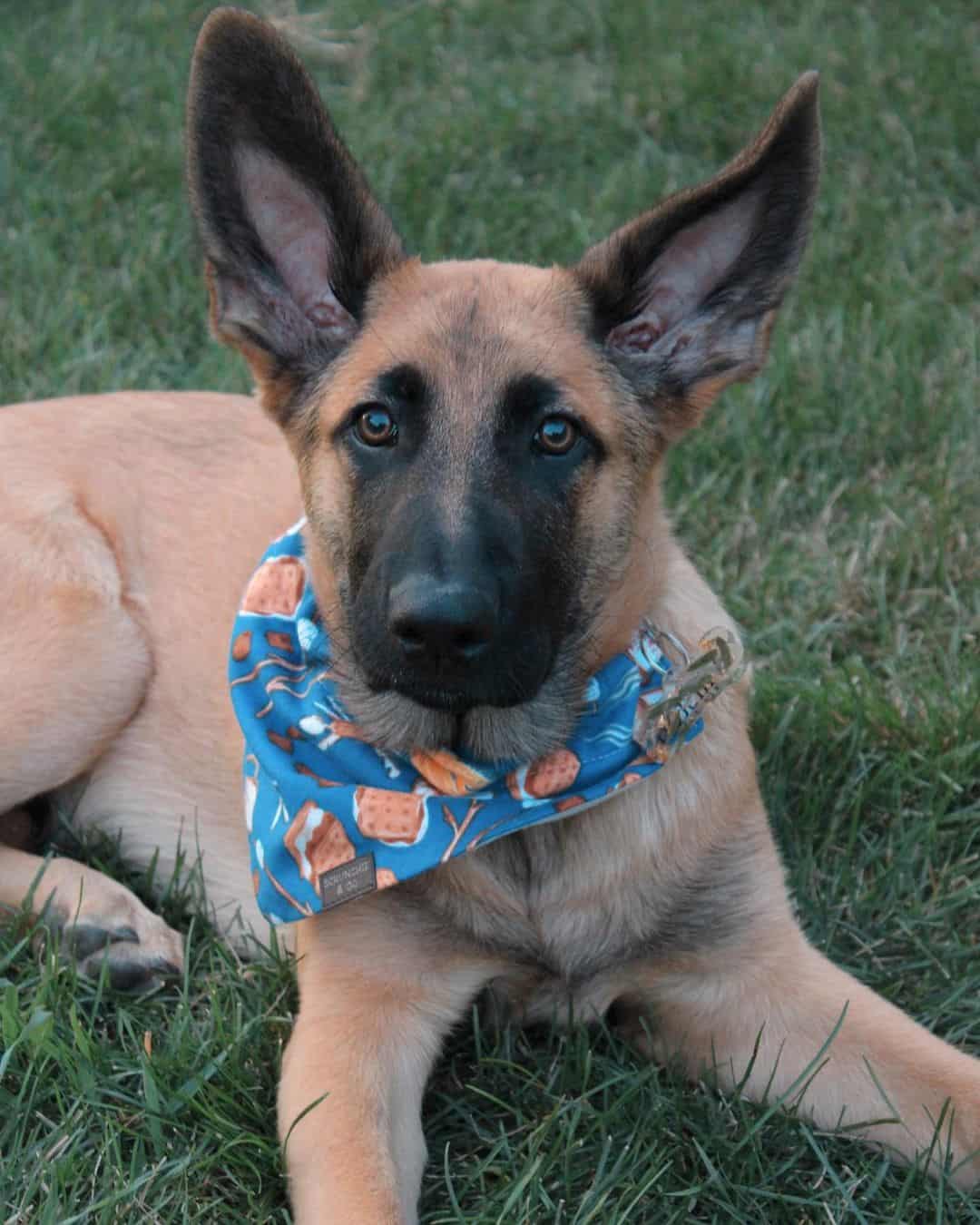
As far as health problems are concerned, the dog is likely to inherit the issues from both parents, though how prone he ends up being to them can be a tossup.
Some are pretty much guaranteed though as they either affect all dogs or affect large breed dog representatives.
However, as a first generation mixed breed, the Bernese Shepherd does possess something called hybrid vigor which means he’s less prone to the hereditary issues at the very least due to a more potent immune system.
With that said, here are some of the more common issues:
Hip and Elbow Dysplasia
Elbow and hip dysplasia are what happens when a joint falls out of a socket due to wear, and something that large dog breeds are more prone to than smaller ones given the increased amount of stress said joints suffer.
Keeping your dog in shape will help slow the process down, but should it happen, there isn’t really a way to fix it.
Progressive Retinal Atrophy
A health condition that affects the eyes, leading to the slow degradation of retinal rods and cones worsening your dog’s sight and leading to eventual blindness.
It’s a genetic issue that’s likely to affect the German Shepherd Bernese mountain dog mix, and there is no known cure yet, but it won’t impact his life expectancy at least.
Bloat
A classic problem that all dogs have which usually comes around due to overeating or poor pacing while feeding.
When the stomach tries to retract after distending, it can twist around itself which often restricts the blood flow to other organs and can trap the stomach’s contents inside itself.
The condition of your dog will immediately worsen, but quick action can prevent permanent damage as long as you get him to the vet to reverse the issue.
Pancreatic Insufficiency
A condition where the pancreas doesn’t produce enough enzymes and a lot of nutrients end up undigested.
This can lead to sudden weight loss despite having a healthy diet, and a clear sign of it is a paler stool with more fat in it.
There is no definitive cure as it’s a lifelong condition, but it can be treated with ease and won’t affect your dog’s lifespan
Food Allergies
Stomach sensitivities are relatively common, and should your dog end up having one, you will have to adapt his diet. The common ones tend to be tied to grains, but anything is liable to become an allergy.
Von Willebrand’s Disease
Von Willebrand’s disease is a condition where your dog’s body doesn’t produce enough protein to help platelets form, leading to open wounds that seemingly won’t heal.
While treatable, it is a condition that will continue being a problem, so you’ll need to keep your dog safe.
As for their lifespan, they live about a year longer than their Bernese parents on average, going from about 7 to 10 depending on the quality of his health.
Cost
Price wise, Bernese Shepherds cost around $700 on average, so they’re pretty affordable pets, just make sure you’re getting them from a reputable breeder.
In Conclusion
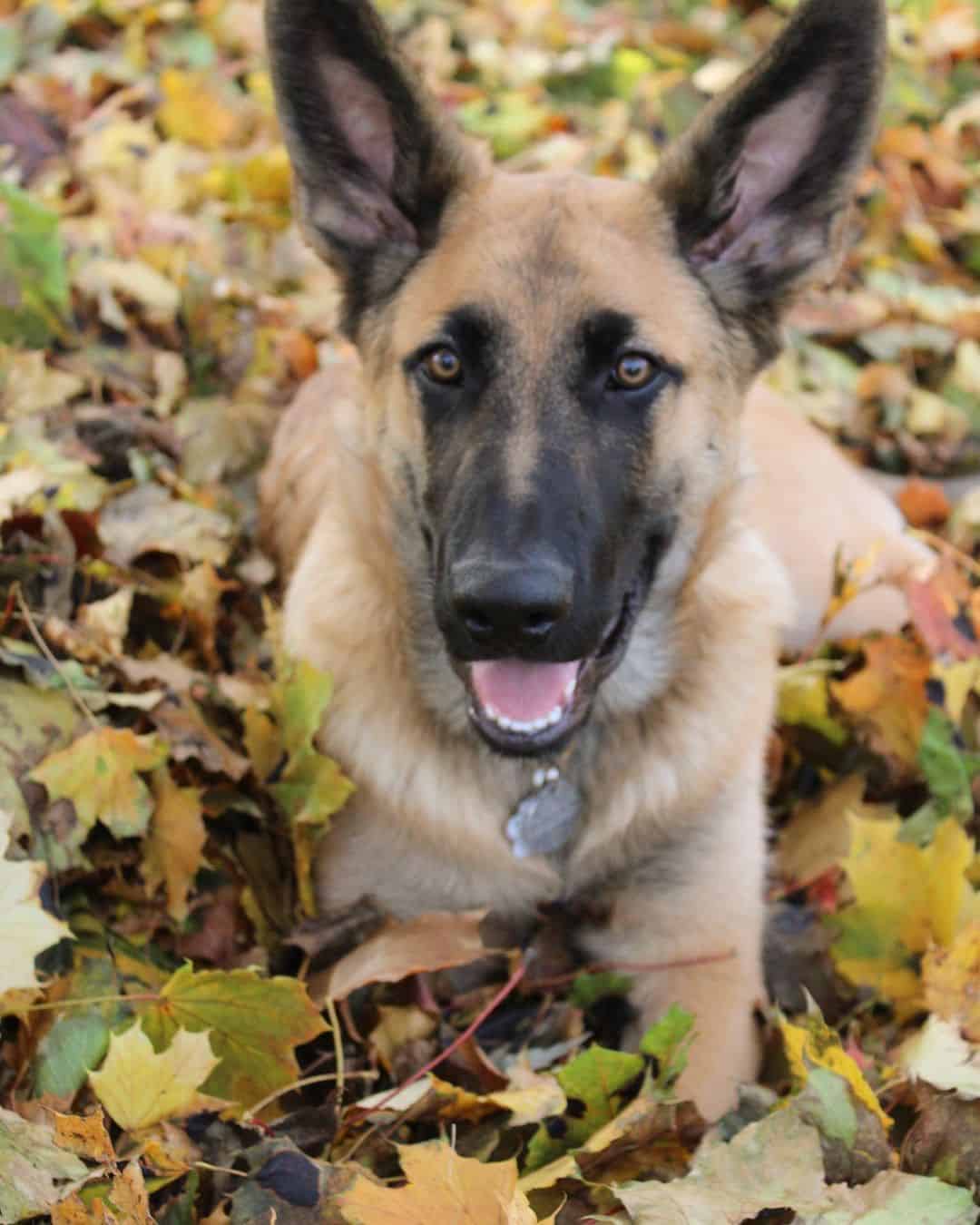
The German Shepherd Bernese mountain dog mix is a great all around dog, making for an exceptional herder, family pet and guard dog.
He may require a lot of maintenance in terms of grooming, training and exercise needs, but if you can manage these hurdles, you’re left with an exceptional dog who ticks every box you’d ever need.
If you can find a breeder that raises these beautiful doggos, I recommend getting one. You won’t be disappointed. Until next time, pet parents.
RELATED LINKS:
- 5 Rationales For Why Do German Shepherds Tilt Their Heads
- Fat German Shepherd: Signs, Reasons, And Treatment
- How To Identify A Full-Blooded German Shepherd
- 11 Best German Shepherd Breeders In Tennessee
- Bernese Mountain Dog Feeding Chart: Berner’s Healthy Diet
- Top 44 Cutest Bernese Mountain Dog Mixes Of All Time
- Top 6 Amazing Bernese Mountain Dog Breeders In Colorado
- Bernese Mountain Dog Cost: Puppy Prices, Care, And Expenses
- Male Vs Female Bernese Mountain Dog: Which One Is Better?















